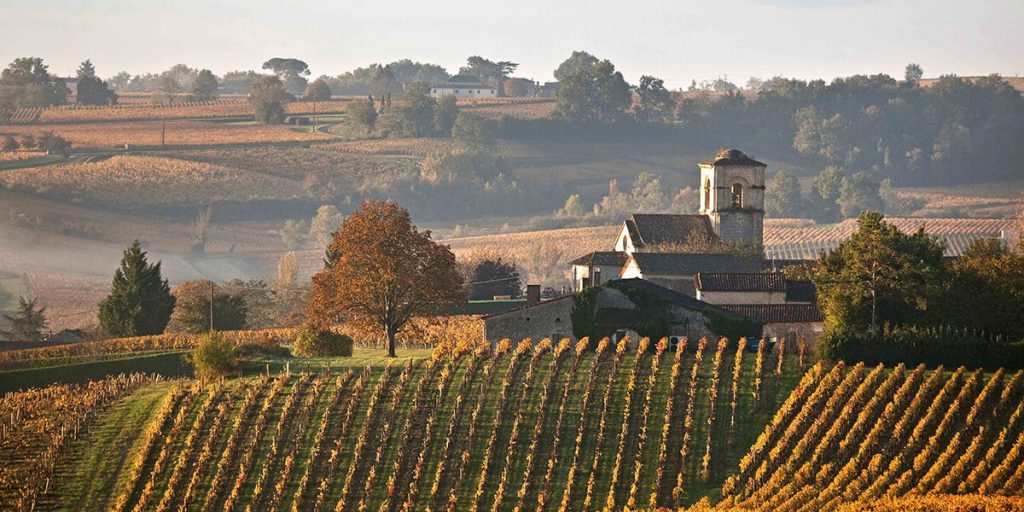Bordeaux, the world’s premier wine region, is split in two by the Gironde estuary, that estuary itself formed by the confluence of the Garonne and Dordogne rivers. All of the great chateaux of Bordeaux that we have talked about so far lie on the “left bank”; that is, the west side of the Gironde and the Garonne. Today we visit the “right bank” – the other side of the Gironde and the Dordogne.
The differences between the two sides are more than geographical. On the left bank, tradition is the most important value; their 1855 classification system is revered and kept intact. Over on the right we find much more innovation and willingness to embrace new approaches. There is a classification system, but it is reviewed every ten years, and wines can be promoted or demoted within their classification, or they may be added or dismissed – almost unheard of on the left bank of the river!
The centre of the wine trade here is St. Emilion, arguably the most picturesque wine town in all of France. This exquisite little gem of barely 2,000 inhabitants is a must-see for any serious wine lover. Founded centuries ago by the Romans, St. Emilion today is rustic and sophisticated at the same time. Enclosed within ramparts of buttery stone, roofed with red tiles, with narrow twisting hilly streets, this ancient town consists of hotels, restaurants and wine shops, along with a few churches and other historic sites, so all you do here is eat, drink St. Emilion, and sight-see. You
may also visit individual chateau, to taste the wine and buy directly from the owner.
It is the sumptuous wine that lies at the heart of all this. The principal grape here is Merlot; most wines are 80% or more Merlot, with Cabernet Franc making up most of the balance. The dominant Merlot gives these wines their lush richness, making them accessible and delicious in their youth. St. Emilion is the perfect introduction to Bordeaux: you don’t have to study the history and learn the names of all the communes, and you don’t have to cellar it for decades in order to experience its delights. There are nearly 1,000 different chateaux, and until quite recently prices were moderate. Increasing popularity has caused market demand to skyrocket, and many of the best chateaux have garnered high profiles from the critics, so today you must be prepared to spend as much here as on the left bank. But the rewards are worth it – you will find savoury food-friendly wines that are the perfect accompaniment to all kinds and styles of dishes, particularly veal, pork and pheasant or roast chicken.
The classification is easily learned and understood. At the top are wines called St. Emilion Grand Cru Classé, then follows St. Emilion Grand Cru, and finally plain St. Emilion. At the Grand Cru Classé level prices have soared, but there is much good value to be found among the ranks of Grand Cru chateaux. In Ontario it is uncommon – but occasionally possible – to encounter simple St. Emilion at the LCBO; in France it is available in every supermarket, at astonishing value prices. Any chateau can qualify for an upgrade to the next level based on expert tasters’evaluation of their wines; they must demonstrate their quality consistently in annual tastings, and the category placement changes are made every ten years.
Plan your visit here for April or November, outside the high season for tourism. It will still be thronged, so book your lodgings well in advance and prepare for the vacation experience of a lifetime!

